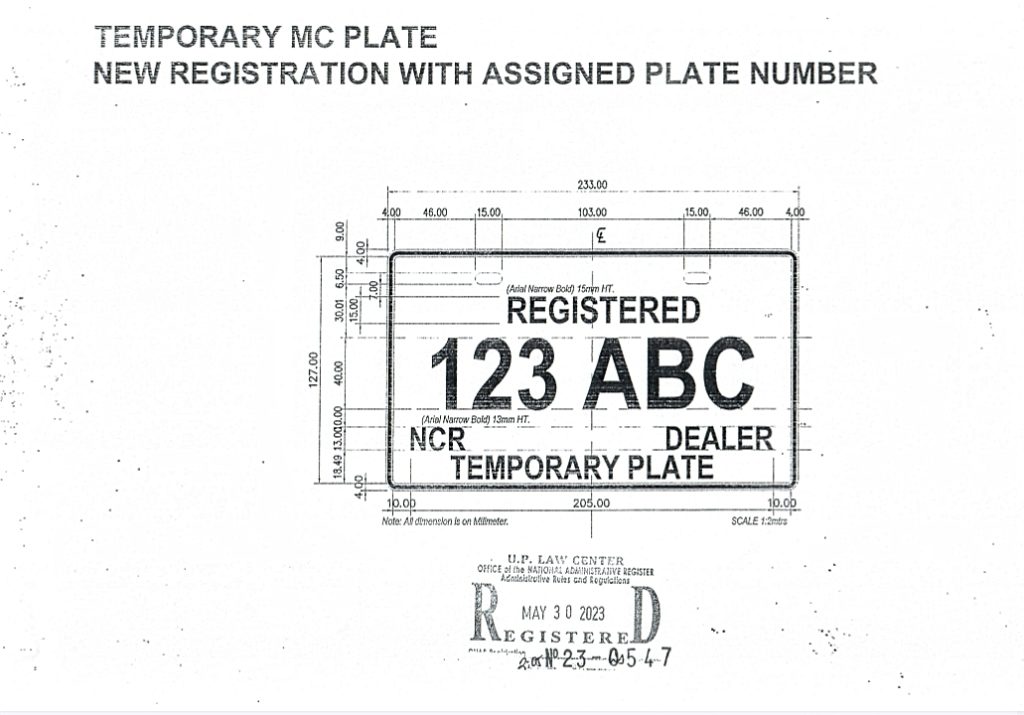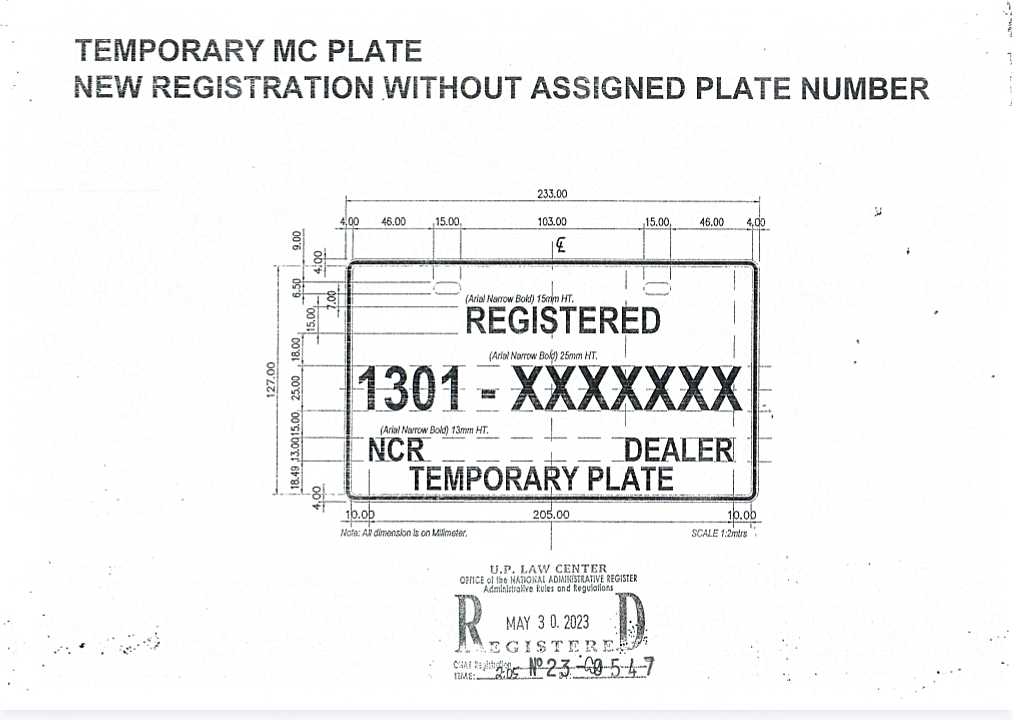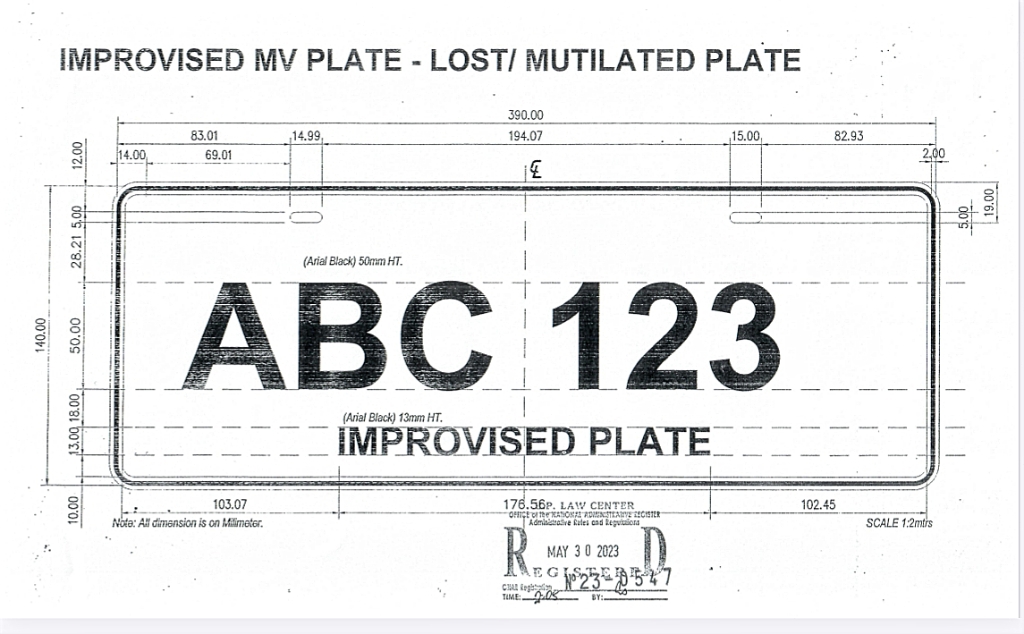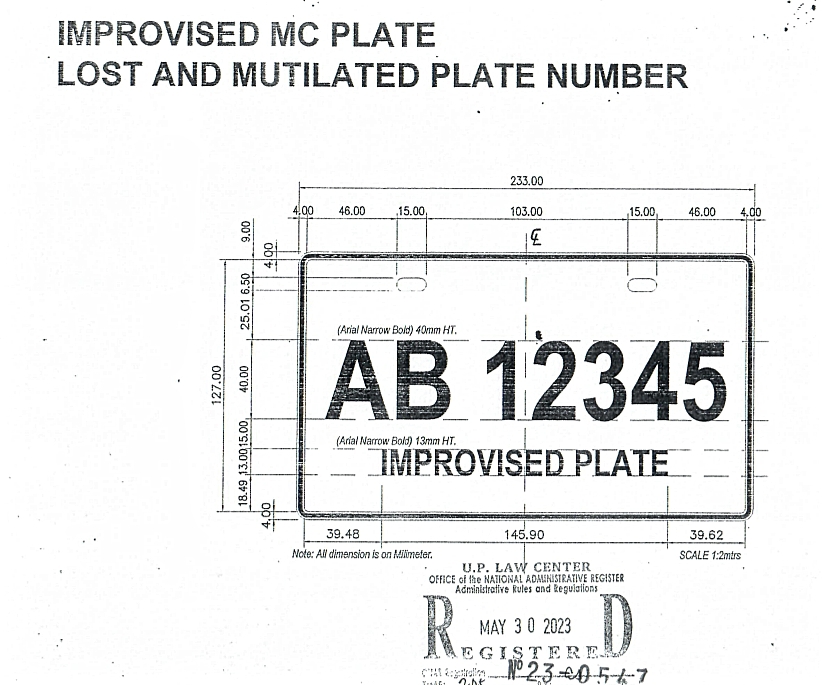Temporary license plates do not require an authorization letter from the Land Transportation Office (LTO). However, the dealership bears the primary responsibility for issuing these plates for newly purchased vehicles, while the vehicle owner handles it for previously registered ones. Understanding these rules is essential for vehicle owners to avoid legal complications.
Ensuring proper vehicle identification while waiting for official plates is crucial. The LTO has set guidelines to manage the use of temporary and improvised plates, making the process clear for all motorists. In this article, we summarized these guidelines detailed in the LTO Memorandum Circular No. JMT-2023-2400.
Temporary Plates Explained
Temporary plates are issued by dealerships to vehicle owners while waiting for the official plate numbers. They may also be created by vehicle owners for previously registered vehicles that lack an assigned plate number. Newly registered vintage vehicles can also use temporary plates until they receive official plates. The content of these plates includes the assigned plate number or, in its absence, the Conduction Sticker number for motor vehicles or the MV File Number for motorcycles and trailers.
The temporary plate must display the words “Temporary Plate” below the assigned number. For vintage vehicles, the words “Vintage Vehicle” and the model year must be shown. Battery electric vehicles (BEVs) and hybrid electric vehicles (HEVs) should have “Electric” or “Hybrid” indicated accordingly.


Improvised Plates: When and How to Use Them
Improvised plates are used when the original plate is lost or mutilated. Vehicle owners can make these plates while awaiting the replacement. The LTO District or Extension Office that processed the duplicate plate request will issue the authority to use the improvised plate once the necessary requirements are submitted. This permit remains valid until the actual plate is available. Improvised plates must show the vehicle’s assigned plate number with the words “Improvised Plate” below it.


For vehicles reclassified as vintage, the improvised plate should also include “Vintage Vehicle” and the model year. This ensures that even while waiting for the official plate, the vehicle is properly identified.
Font Color Guidelines for Plates
The font color of temporary and improvised plates varies by vehicle classification. For your reference, here is a font color guide you can use:
- For private vehicles, the color is black.
- Government vehicles use red,
- for-hire vehicles use yellow, and
- For diplomatic vehicles use blue.
- Hybrid and electric vehicles use green to indicate their special status.
These colors help in the easy identification of the vehicle’s classification by law enforcement and other officials.
Responsibility and Authorization
For temporary plates with an assigned plate number, dealerships are responsible for new vehicles, while vehicle owners handle already registered and vintage vehicles. No additional authorization is needed for these temporary plates. However, for improvised plates, vehicle owners must obtain a permit from the LTO, which ensures compliance with legal standards and proper vehicle identification.
Important Considerations
For your reference, here are some things worth taking note of when it comes to using temporary and improvised plates.
- Primary Responsibility: The dealership handles new vehicles, while owners handle previously registered ones.
- Content Requirements: Temporary plates must include the assigned plate number or other identification numbers and relevant labels like “Temporary Plate” or “Vintage Vehicle.”
- Font Colors: Follow the specific color guidelines for different vehicle types to ensure proper identification.
Video: LTO Authorization Needed for Improvised Plates
For a comprehensive visual explanation, watch this informative video from Palaleng that breaks down the LTO authorization requirement for using improvised plates, ensuring you comply with LTO regulations.
Summary
Understanding the use of temporary and improvised plates is crucial for vehicle owners. Temporary plates do not require LTO authorization and are managed by the dealership or owner, depending on the vehicle’s status. Improvised plates require a permit from the LTO. Following the guidelines for content and font colors ensures proper identification and compliance with the law.